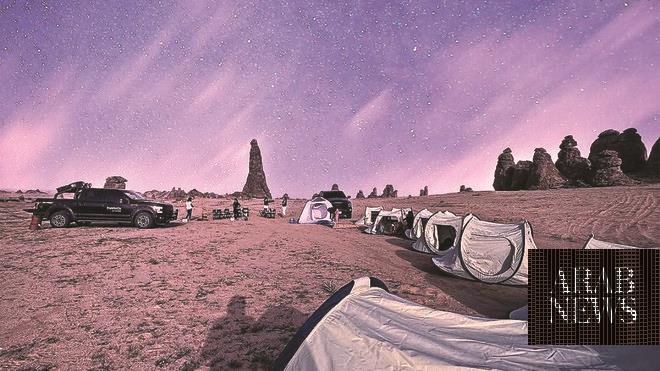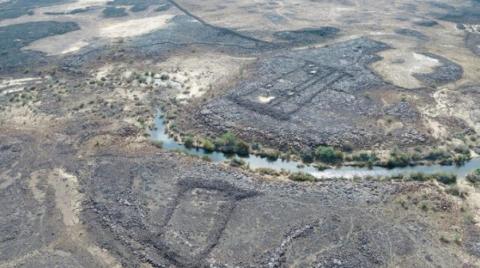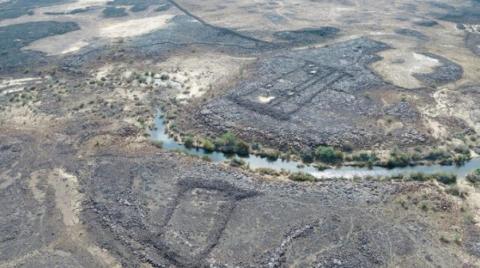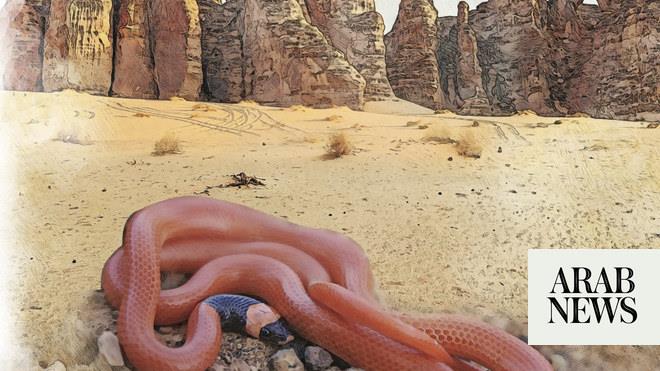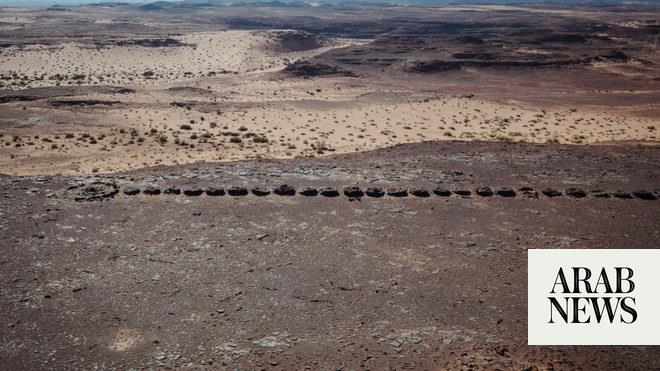
ALULA: Recent archaeological excavations in AlUla uncovered evidence of what appear to be sophisticated rituals carried out by Neolithic inhabitants of northwestern Arabia at the sites of what are known as “mustatils,” Neolithic structures where remains of skulls and horns dating back to the 6th millennium BC have been found.
The discoveries, during digs supported by the Royal Commission for AlUla, help to provide a better understanding of the cultural, social and spiritual beliefs of the ancient peoples who inhabited the area.
Mustatils, which were previously called “gates,” are large, outdoor, rectangular structures characterized by low stone walls. Using aerial surveys, researchers have identified more than 1,600 of them across the northern Arabian Peninsula, and since the 1970s, examples of the monumental stone structures have been documented across Saudi Arabia.
Built more than 7,000 years ago, the function of the enigmatic structures long remained a mystery but excavations since 2018 have revealed clues that suggest they were used in the performing of rituals.
The results of two studies were recently published after peer review. One, led by Wael Abu-Azizeh of the Archeorient Laboratory and Lyon 2 University in France, appears in the book “Revealing Cultural Landscapes in North-West Arabia,” edited by a team of experts led by Rebecca Foote, the director of archaeology at the RCU.
The other, led by Melissa Kennedy of the University of Sydney in Australia, appeared in the journal PLOS One in March.
In 2018, Abu-Azizeh began an excavation on behalf of Oxford Archaeology that unearthed a “horn chamber” at a mustatil site northeast of AlUla dating to around 5300-5000 BC. It measures 3.25 meters by 0.8 meters and is located at the western end of the mustatil, which at 40 meters by 12 meters is smaller than most.
Covering the floor of the chamber, Abu-Azizeh and his team discovered horns and skull fragments densely packed in a layer between 20 and 30 centimeters deep. This, they write, is “a unique and unprecedented assemblage in the context of north Arabian Neolithic.”
About 95 percent of the horns and skull fragments came from domesticated species, including goats, sheep and cattle, and the remainder from wild species, including gazelle, Nubian ibex and auroch, a now-extinct ancestor of cattle.
Under the bones and horns a thin bed of wooden sticks was found, apparently placed on the chamber’s sandstone floor in preparation for the ritual. The researchers concluded that the horns and skull fragments were probably placed there during a single ceremony.
Kennedy, who has been working in AlUla since 2018, initially worked on a project that used remote-sensing equipment to identify heritage assets and archaeological features, using Google Earth satellite imagery and other maps. In 2019, she began excavating a mustatil deep within the dense sandstone canyons east of AlUla.
“We identified around 13,000 sites,” she told Arab News. “We did a program of aerial photography over the key features and sites in the region and, based on a combination of the satellite imagery and the aerial photographs, we then picked sites to ground survey and then excavate. And one of the key findings from the project were the mustatils.”
Just like Abu-Azizeh’s team, Kennedy and her colleagues discovered a chamber containing horns and skull fragments, which were dated to around 5200-5000 BC, though the quantity was smaller. Another difference was that the bones appeared to have been placed there in three or four phases over a generation or two, rather than all at once.
“What was quite interesting when we got on the ground, after flying out there by helicopter and having a walk around, we started to see these really interesting features,” Kennedy said.
“There were these little round structures with standing stones still in them at the front. Then we could see it (the mustatil) had an entranceway, so it wasn’t just a giant rectangle, it had other features to it.”
In the back part of the structure, she said, they found fallen remains in the shape of a structure, with a standing stone in the center and horns placed around the stones.
“The (standing) stone is probably a representation of a deity,” Kennedy added. “We don’t know who but we thought it was quite unique.
“We’ve found others as well and they are consistent in their arrangement, although their quantities vary. But they are all made of horned animals, mainly cattle.”
The discoveries, she said, offer early examples, probably the first in the Arabian Peninsula, of a standing stone being used as a representation of a deity.
The presence of the remains of domesticated species among the animal offerings testifies to the pastoral and nomadic nature of the Neolithic communities of the time, who researchers believe built the mustatils as a form of social bonding and markers of territory.
It is also thought that the probable communal character of the rituals, and the high possibility that people journeyed to these prehistoric stone structures especially to take part in them, suggest that they represented one of the earliest known forms of pilgrimage traditions.




